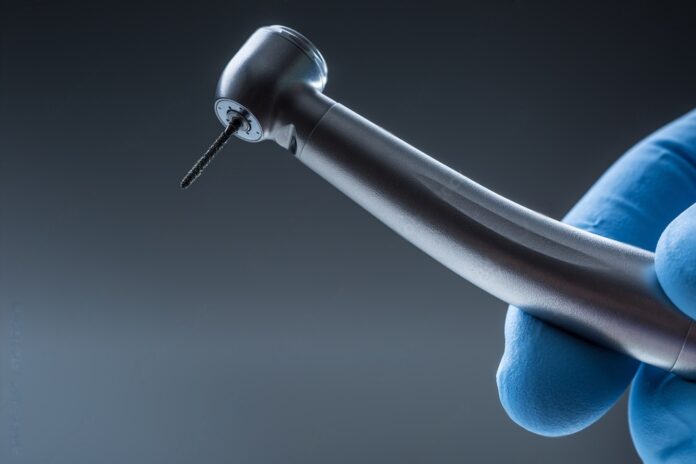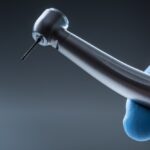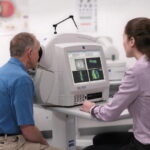As a result of this procedures need to be well coordinated and to this end, precision tools are used by dental practitioners. Among the most essential tools in a dentist’s arsenal are carbide burs, which have revolutionized various aspects of dental work. Today’s dentistry cannot work without these tools as they are both strong, sharp, and very effective. Whether for cavity preparation, crown removal, or detailed shaping, carbide burs enhance the overall precision and effectiveness of dental procedures.
What Are Carbide Burs?
Carbide burs are rotary cutting tools made from tungsten carbide, a material known for its extreme hardness and resistance to wear. There are a lot of these burs out there, and they come in a lot of different shapes and sizes – each one designed for a specific use in dentistry. Compared to traditional stainless steel burs, carbide burs offer a higher cutting efficiency and longer lifespan, making them a preferred choice for many dental professionals.
How Carbide Burs Improve Efficiency in Dental Procedures
The use of carbide burs in dentistry significantly enhances precision and efficiency. Dentists employ their sharp edges to make neat cuts with or without applying force which minimizes the damage to the tissues nearby. That efficiency is evidenced by faster service delivery, reduced pain to the patient, and improved treatment results.
Carbide burs also produce less heat than other burs used for finishing, and so are less likely to damage the pulp and safer for the patient. Thus, good cavity preparation leads to improved cutting performance and the cutting performance thus improves to facilitate good cavity preparation for easy insertion of fillings and restorations.
Carbide Burs in the Field: Key Applications of Dentistry
Cavity Preparation
To remove decayed tooth material before filling a cavity, carbide burs are used. They are razor sharp; with very precise removal of caries with minimal removal of healthy tooth structure.
Crown and Bridge Removal
Crowns and bridges are often cut through with carbide burs by dentists. It’s precisely why they’re such good candidates to do these procedures: they can easily cut through hard materials with hardly any effort.
Restorative Dentistry
Carbide burs are major players in using dental restorations in restorative dentistry for shaping and contouring. They make the filling look as natural as possible and a natural smoothness by smoothing it.
Oral Surgery and Endodontics
Carbide burs are used in oral surgery for exposure of cavities; and in endodontics for the placement of a root canal file. For delicate procedures, they must be precise.
Advantages of Using Carbide Burs in Dental Practice
- Longevity: Stainless steel burs need to be changed sooner than carbide burs—the result being less replacement frequency and costs.
- Precision Cutting: The reason is that they have finer details and give clean cuts.
- Reduced Patient Discomfort: The shorter the procedure (the faster the cutting speed), the less stress there is on the patient’s teeth and gums.
- Minimal Heat Generation: This causes less friction with less heat build-up and less possibility of damage to the tooth pulp.
Conclusion
Carbide burs (bentonite and carbon) have the efficiency, precision, and durability that make them a staple in modern dentistry. They are needed in any dental practice because of their ability to add value to so many dental procedures, such as cavity preparation to restorative treatment. Dentists can use high-quality carbide burs to guarantee better treatment outcomes, enhanced patient comfort, and faster procedural efficiency.
Did you find this helpful? Check out our other helpful articles on our website.
Read Also
- Comparing 2025 Dental Practice Management Software OptionsSoftware Key Strengths Potential Limitations Best For Dentimax • Offers both cloud-based and on-premise/server deployment. • Tight integration between imaging (e.g. X-ray sensors) and practice management, charts, treatment planning, imaging all in one. • Transparent pricing and relatively simple UI/usability; solid for small to medium general practices. • May lack some of the… Read more: Comparing 2025 Dental Practice Management Software Options
- Top Innovations in Dermatology and Skincare TechnologiesHave you ever wondered how skincare keeps getting better year after year? From fighting acne to reducing wrinkles, today’s treatments seem more advanced than ever before. The tools and techniques used by dermatologists today are smarter, safer, and more effective than those we had just a few years ago. These breakthroughs don’t just help with… Read more: Top Innovations in Dermatology and Skincare Technologies
- Telehealth and Beyond: Building a Connected Continuum of CareHealthcare is on the verge of a radical transformation. Technology no longer simply supports medicine; it actively shapes how care is delivered and experienced. Achieving a seamless continuum demands more than deploying tools—it requires intentional design, coordinated teamwork, and innovative platforms that adapt to diverse clinical and patient needs. This article explores key strategies for… Read more: Telehealth and Beyond: Building a Connected Continuum of Care
- Optimizing CT Protocols: The Hidden Key to Efficiency and Cost Savings in RadiologyIntroduction: Why CT Protocol Optimization Matters Computed Tomography (CT) is a cornerstone of modern diagnostic imaging, providing critical information across nearly every medical specialty. However, maximizing the value of CT — both clinically and financially — requires more than just advanced hardware. The real secret lies in the optimization of CT protocols. When CT protocols… Read more: Optimizing CT Protocols: The Hidden Key to Efficiency and Cost Savings in Radiology
- The Role of Carbide Burs in Modern Dental ProceduresAs a result of this procedures need to be well coordinated and to this end, precision tools are used by dental practitioners. Among the most essential tools in a dentist’s arsenal are carbide burs, which have revolutionized various aspects of dental work. Today’s dentistry cannot work without these tools as they are both strong, sharp,… Read more: The Role of Carbide Burs in Modern Dental Procedures
- Detection of Diabetic Retinopathy: The AI AdvantageDiabetic retinopathy (DR) is a leading cause of blindness among working-age adults, affecting millions worldwide. The prevalence of DR is alarmingly high, affecting an estimated 34.6 million people globally. In the United States alone, it is estimated that 7.7 million adults have some form of diabetic retinopathy. How Does Diabetes Affect the Eye? Most of… Read more: Detection of Diabetic Retinopathy: The AI Advantage
- Advances in Digital Health: Transforming Modern HealthcareThe healthcare landscape is undergoing a seismic shift with the advent of digital health technologies. These innovations are not just modern conveniences; they are transformative tools that bridge gaps in accessibility, improve patient outcomes, and empower individuals to take charge of their health. From wearable devices to telehealth and artificial intelligence, digital health is creating… Read more: Advances in Digital Health: Transforming Modern Healthcare
- The Latest Advancements in Urology ProceduresUrology, the branch of medicine concerning the urinary system and male reproductive organs, has seen remarkable advancements in recent years. Technological innovations have led to more precise, less invasive, and increasingly successful procedures that promise better outcomes for patients. From state-of-the-art robotics to personalized medicine approaches, the field of urology is evolving at a rapid… Read more: The Latest Advancements in Urology Procedures









